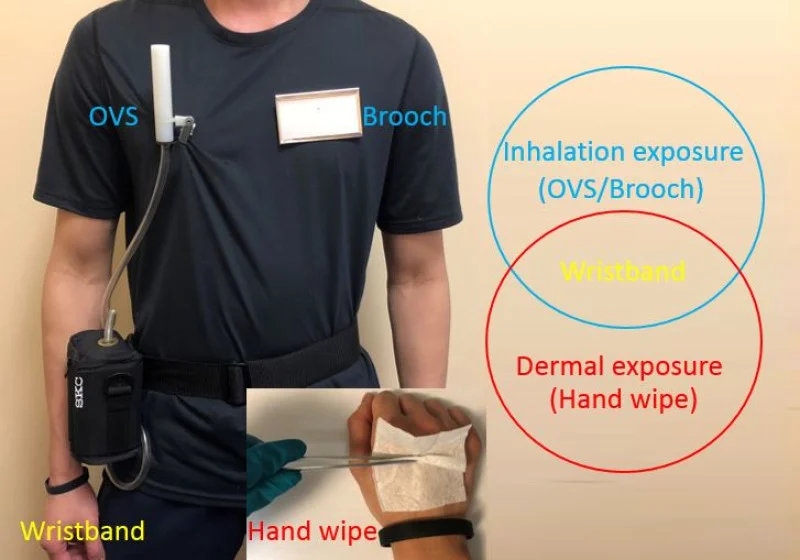Silicone wristbands are sampling a combination of dermal and atmospheric exposure:
Abstract: Silicone wristbands are being increasingly used to assess human exposure to semi-volatile organic compounds (SVOCs). However, it is unclear what exposure pathways wristbands integrate. To test the hypothesis that wristbands integrate inhalation and dermal exposures, we measured 38 chemicals from four compound groups (PAHs, PBDEs, nBFRs, and OPEs) in silicone wristbands and brooches, active air samples (Occupational Safety and Health Administration Versatile Sampler or OVS cartridge), and hand wipes from 10 adults during a 72-hour period. Phenanthrene, BDE-47, 2‑ethylhexyl 2,3,4,5‑tetrabromobenzoate (EHTBB), tris[(2R)‑1‑chloro‑2‑propyl] phosphate (TCIPP), and tris(1,3‑dichloro‑2‑propyl) phosphate (TDCIPP) were the predominant compounds in all four matrices. In a linear regression analysis, the compound levels in OVS were positively associated with those in wristbands and brooches for nBFRs and OPEs, but not for PAHs and PBDEs. The compound levels in wristbands were positively associated with those in hand wipes and brooches for all chemicals. The regressions between the levels in wristbands and OVS or brooches combined with the levels in hand wipes showed stronger, supporting the hypothesis that wristbands captured inhalation and dermal exposure pathways.

